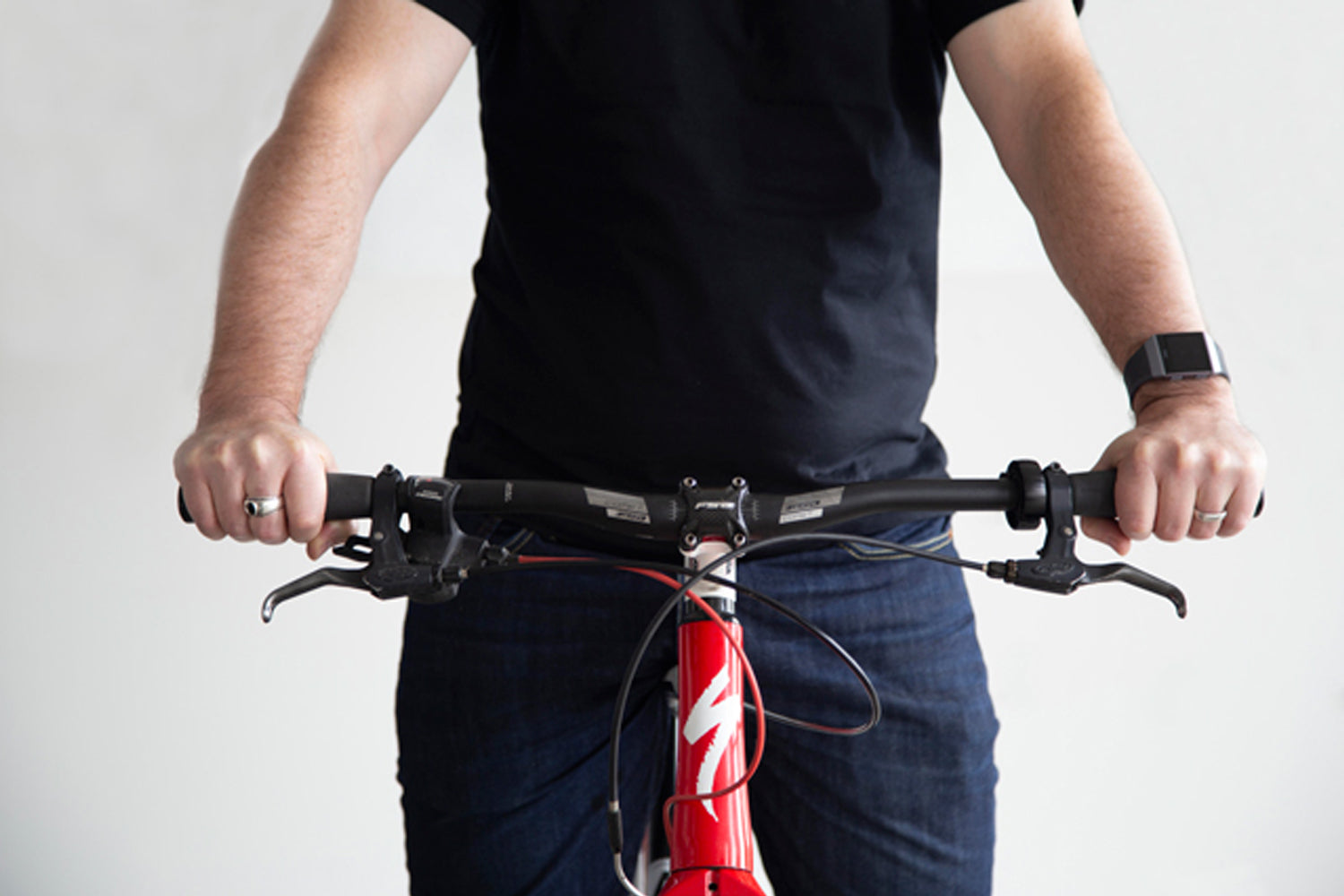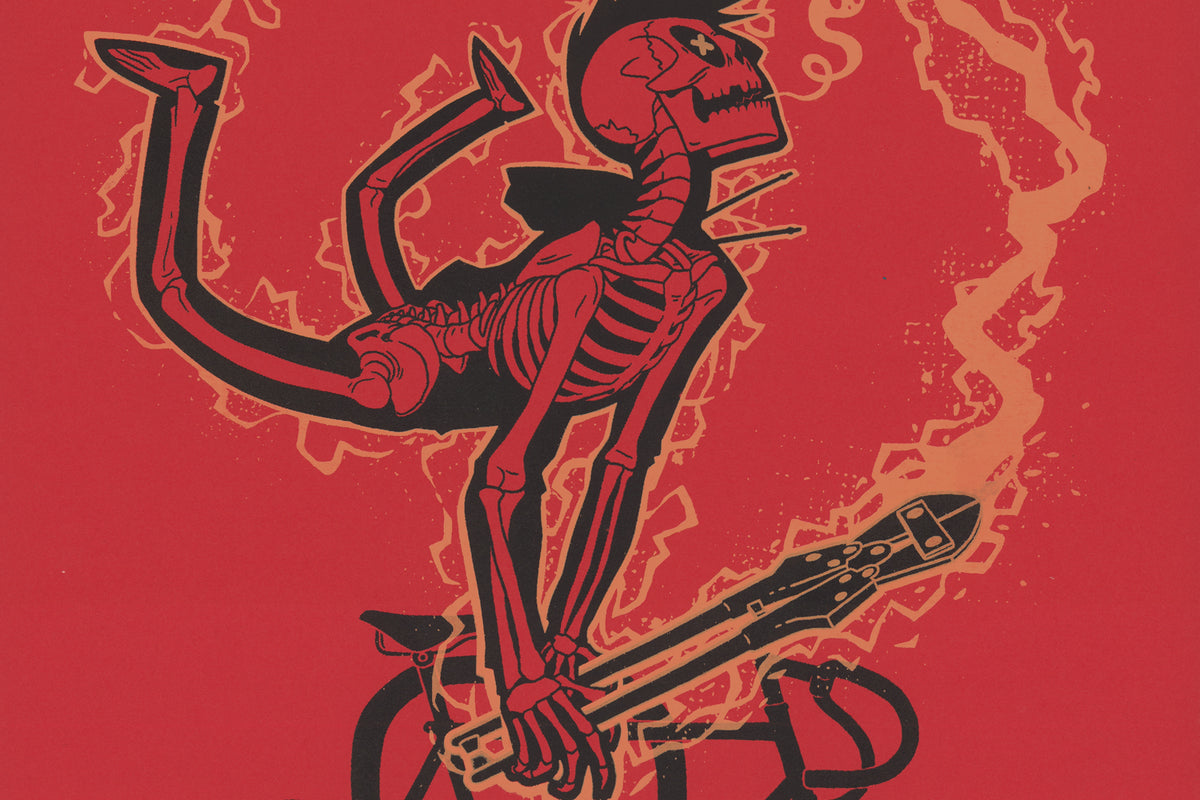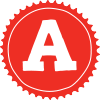
Holding It Together
I don’t know how much I weigh.
I can guess within a 10 to 15-pound range, but it’s just that: a guess. The number on my driver’s license? Also a guess. There’s a scale in our house, but I make a point of not stepping on it. A couple times a year, I go to a doctor’s office and step on one. They tell me a number which I promptly do my best to forget.
I’m not afraid of enumerating my weight, and I’m definitely not in denial about it. Part of this is just that numbers and I have never really gotten along (much to the chagrin of my engineer dad and nurse mom). But honestly, it’s more about the fact that, as I’ve gotten older, this particular number has begun to seem more and more arbitrary, and less useful.
After spending a good chunk of my 20s and 30s abusing my body in all of the usual ways — albeit sometimes with profoundly inadvisable frequency and intensity — I finally learned to start listening to it in my 40s. Of course, as anyone who’s hit this particular decade will tell you, you don’t really have a choice but to listen. The resilience I could once count on to help me recover from strains, sprains, bruises, hangovers, and other misadventures just isn’t there anymore. The sluggishness I used to be able to work off in a matter of days seems to hang on with more tenacity, and I have to do more just to maintain a basic sense of wellbeing. And when I do go out for a long ride, put in a hard workout, or just spend a day working in the yard, I can’t just shake it off the next day. Or sometimes the day after that.
But as I’ve gotten better at listening to my body, I’ve learned that I already know what those numbers on the scale would tell me, or at least the important part. I’ve never been good at sitting still, and when I’m not active, I end up in a bad place: physically, mentally, emotionally. My body feels terrible, I’m prone to moodiness and depression, and by all reports not exactly a picnic to be around. I know this, and I know what I need to do. But sometimes, standing in that lengthening shadow, the simple effort required to do it seems overwhelming. Or hardly worth trying at all.
I grew up in St. Louis, a city with long, hot summers and short winters that reliably ended for all intents and purposes around Valentine’s Day. When I moved to St. Paul for college, I knew logically that I was in for shorter summers, longer winters, and cooler temperatures all around. But like many transplants, I don’t think I was able to fully anticipate how cold those winters would get. Or how long they’d drag on.
But just as I could absorb a lot more physical abuse when I was younger, I was a lot more resilient psychologically, too. Sure, those weeks of sub-zero temps sucked, but they ended eventually. Of course, it helped that a lot more of my time was spent hanging out with friends, whether or not I was necessarily doing anything good for me. And I was increasingly busy in a career that I more or less loved. So I did not lack for distractions.
Everything started to change in earnest once I hit my 40s, too. Even after a few decades in Minnesota, I’ve never taken to winter, at least not with the enthusiasm of the locals. There is no shortage of outdoor activities, most of which I’ve gamely tried. I just don’t like to be cold, and even with the best gear sometimes there’s no getting around the fact that the weather is actively trying to kill you. The cold here isn’t just unpleasant — it actually hurts. Or at least it hurts me. All the more so since the cornucopia of bone and joint injuries I’d incurred over a lifetime of generally acting like a human pinball started returning for second acts as persistent aches that show up reliably as soon as the temperature drops and loiter like a bunch of sadistic degenerates for months on end.
Today, I can predict an impending drop in barometric pressure with my right pinkie — impressively mangled in my 30s by a volleyball badly enough to require surgery that involve stabilizing various bits and pieces of metacarpal with wires that I never want to see again— alone. Specifically, when it begins to throb like I punched a wall. But it’s not just physical pain.
I’ve always known that Seasonal Affective Disorder (SAD: best acronym ever, really) was a thing, at least since I moved here. It just took me a stupefying length of time to understand and accept that it’s a thing I have. Well, probably have. Let’s check the symptoms:
“Feeling depressed most of the day, nearly every day?” Check.
“Losing interest in activities you once enjoyed?” Check.
“Having low energy?” Check.
“Having problems with sleeping?” Check.
“Experiencing changes in your appetite or weight?” Check.
“Feeling sluggish or agitated?” Guilty on both counts.
“Having difficulty concentrating?” I’m sorry, what were we talking about?
“Feeling hopeless, worthless or guilty?” …
So…yeah. Still working on that whole acceptance thing, really.
I hit my low point this past winter. My wife and I spent a month in New Zealand over last January and February, conveniently enabling us to skip the worst weeks of winter here and catch the first weeks of summer there. So when the bottom fell out of the mercury as it always does, it almost caught me by surprise. “Oh, that’s right. I skipped this last year.” And just like that, I was under the shadow. Except it was darker than ever before. I knew I wasn’t right, knew I needed to throw myself into something to break out of it. But I felt stuck to the floor.
I lost a friend to cancer on December 19, and it hit me hard, in part because it was a blow I’d seen coming for months. This was actually one of the friends we’d gone to New Zealand to see. He was in remission then, and seemed like the same guy we’d always known. Brilliant, talented, funny, irascible, lovable. A little tired from the meds in the afternoon, but he’d always rally, right as rain. I got to spend some wonderful, fleeting hours with him, just talking about design and music and bikes and life. A handful of days after we got back to the U.S., his wife told us that a follow-up visit with the oncologist revealed that the cancer was back. There was more treatment, but nothing seemed to slow it down. We spent week after week, month after month watching him slip away from afar, all the more helpless for being half a world away.
There was a memorial service for him here in Minneapolis the first week of January. Temperatures were already plunging towards zero, and the sun was nowhere to be seen. I hadn’t been on a bike in weeks, hadn’t missed a single one of the holiday sweets that hit the office I was working in, and didn’t need to step on a scale or even look in a mirror to know that I was in miserable shape all around. Our friend was always the snappiest of dressers, and everyone going to the service knew they had to come correct. The night before the service, I pulled out the suit that I’d planned to wear, my absolute favorite…and I wasn’t even close to being able to fit into it. I remember sitting on the floor in front of my closet with my head in my hands, feeling for all the world like I’d let him down.
Not long after that, I came down with a sinus infection that would go on to defy a brigade of over-the-counter and prescription medications as well as multiple rounds of antibiotics, sticking around until early April. Whatever plans and hopes I had for getting in time on my trainer in the basement dissipated faster than the boxes of Kleenex I was going through. And even when I was feeling marginally better, it was still too cold to go downstairs for a spin. Yes, too cold inside.
I shudder to think of exactly how little fun I must have been to be around during this stretch. I have to thank a very patient and understanding partner and being so busy with work that I didn’t have to think about much else for getting me through until spring. I still couldn’t fit into half my clothes, but I didn’t have much of an appetite either, so at least I had that going for me.
Suffice it to say I’ve never been happier to see the temperatures climb to the point where I could go for a ride outside and just generally experience sunshine again. My first few rides were miserable, but I knew the alternative and I wasn’t interested in going back into the shadow. That said, I still avoided half of the clothes in my closet, not even daring to look at them, not ready to see if I’d done enough to fit into them again.
I’ve been a bike commuter, during the warmer months at least, since the early 2000s. But it was something I only did 3-4 days a week, taking the bus or driving my car on the days when I wasn’t feeling it. And by last fall, the days when I wasn’t feeling it were pretty much all of them.

One of my winter projects was building up a new-to-me bike that was a better fit for riding to and from my office and my clients’ offices: an old cyclocross frameset set up as a 1x10 with flat bars instead of drops. Simple, light, quick, and more upright than my road bike, which was a plus from both the standpoint of comfort and navigating downtown traffic. My original plan was to keep it cheap, but in typical fashion I went a little overboard. The best decision I made was to upgrade the wheelset, but keep the original hoops set up with winter weather tires to simplify seasonal conversions (and not subject nice wheels to the steady diet of salt, sand and slush that winter riding serves up even on the “nice” days).
Thus far, I’ve been able to travel by bike almost every day of the work week, with exceptions for days when I have multiple meetings in different parts of town. Perhaps it’s just retroactive justification, but I truly believe the fact that this bike is just flat-out fun to ride has made a huge difference in committing myself to a commuting routine. I can ride it comfortably in shorts or jeans, and it takes me almost exactly the same amount of time to get downtown by bike as it would in my car (roughly twice as fast as the bus, too). Most importantly, I get to start and end my day with a bike ride. And even on the days when the streets are an idiot circus of distracted drivers and angry, reckless yahoos, that’s pretty much the best thing ever for my state of mind.
Over the last two months, I’ve made cautious inroads in parts of my closet that had been off-limits throughout the winter. The jeans that I couldn’t pull on in January are comfortable, and even a few particularly slim pairs that I haven’t worn in years are getting close. I’m just vain enough to admit that feels good, but that good feeling is just a symptom — not the source. I’m in a better place, physically, mentally, and emotionally, than I’ve been in a long time. If I stepped on a scale, I might see some sort of quantification of that change. But the most important weight I’ve lost is what I was carrying between my ears.
Some things about my body aren’t going to change. I’ve always had sequoias for thighs, and cycling hasn’t done and never will do anything to make them smaller. They’re my engines, the machines that make me go, and if that means I never get to experience what it’s like to wear skinny jeans, fine. I’ll take that deal 100 times out of 100. I’d like to carry a little less around my middle, but I also like to enjoy good food, drinks, and the occasional pastry. So that’s an ongoing negotiation. Thanks in part to a torn rotator cuff and a shoulder separation, I don’t have the strength and range of motion in my arms and upper body that I’d like and my shoulders feel wrecked after long rides, especially on gravel. Should I be lifting weights and looking for other exercises to work on that? Probably. Do I? Sometimes. As always, I’m a work in progress. I’m just learning not to see that progress in more realistic terms. And to cut myself some slack.
I fell in love with riding a bicycle from the first moment I managed to balance on two wheels because of the way it felt. Like flying. Like freedom. Like a shot of pure happiness straight to the brain. I didn’t think of it as exercise or fitness then, and I don’t now. I’m also not overly interested in reducing that feeling to a set of metrics. Yes, I track my rides through apps like Strava and Blackriver, but for me that’s less about the miles than the reinforcement of doing something that makes me feel good. When I do trainer rides with Zwift, I try to keep an eye on watts and cadence because I want to memorize what it feels like to be pedaling the way I should be. But it’s not something I build a regimen around. I just want to ride.

The belt in the photo above is mine, one that I’ve had for just about a year. The buckle impressions in the leather around the holes tell one small part of my story in that time. For the record, I’m currently using the fourth one in from the end. Am I proud of that? Sure. It’s one sign that I’m doing the things I know I need to do in order to stay somewhat sane and happy. I know that as the summer gives way to fall and winter again, I’ll probably start moving back to the other end of the belt. It’s what my body does, and I’m working on being OK with that. Am I worried about what will happen to me when temperature drops, the sun disappears, and the shadow returns? I am. But for now, I’m just trying to enjoy the fact that I feel good, that I’m surrounded by people I love, that I’ve managed to make a life out of words and ideas and things that come out of my head, that I’m alive.
If I wanted to, I could track my eccentric, tumbling orbit through time and life in the marks of a buckle on a belt. In the digits on a scale or on a GPS. In the avalanche of data continually collected and processed in these tiny computers I carry in my pocket and wear on my wrist. Those numbers probably have stories of their own to tell me, if I could teach myself to listen. But like I said, numbers and I have never really gotten along.
Also in News

Every Ride Has An End

And now for something completely different.
We’ve made changes to the way we operate to accommodate the series of new realities we’ve found ourselves in since March. We’ve also had a chance to bear down and focus on some ideas that we’ve had in the works for a long time and just hadn’t had the time to pull off. Our new site is one of them.


Charles Youel
Author